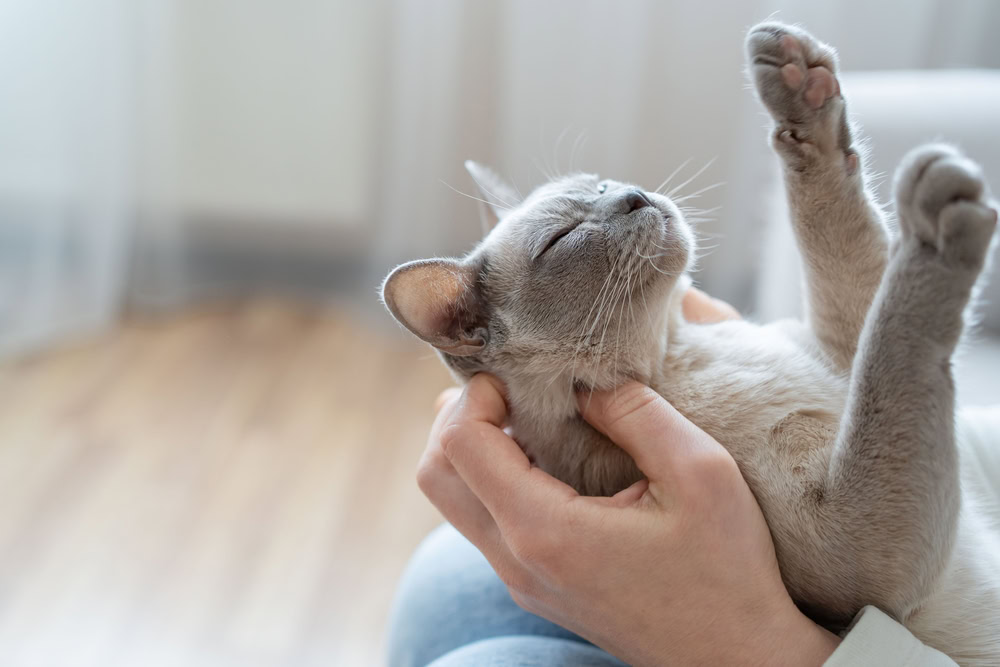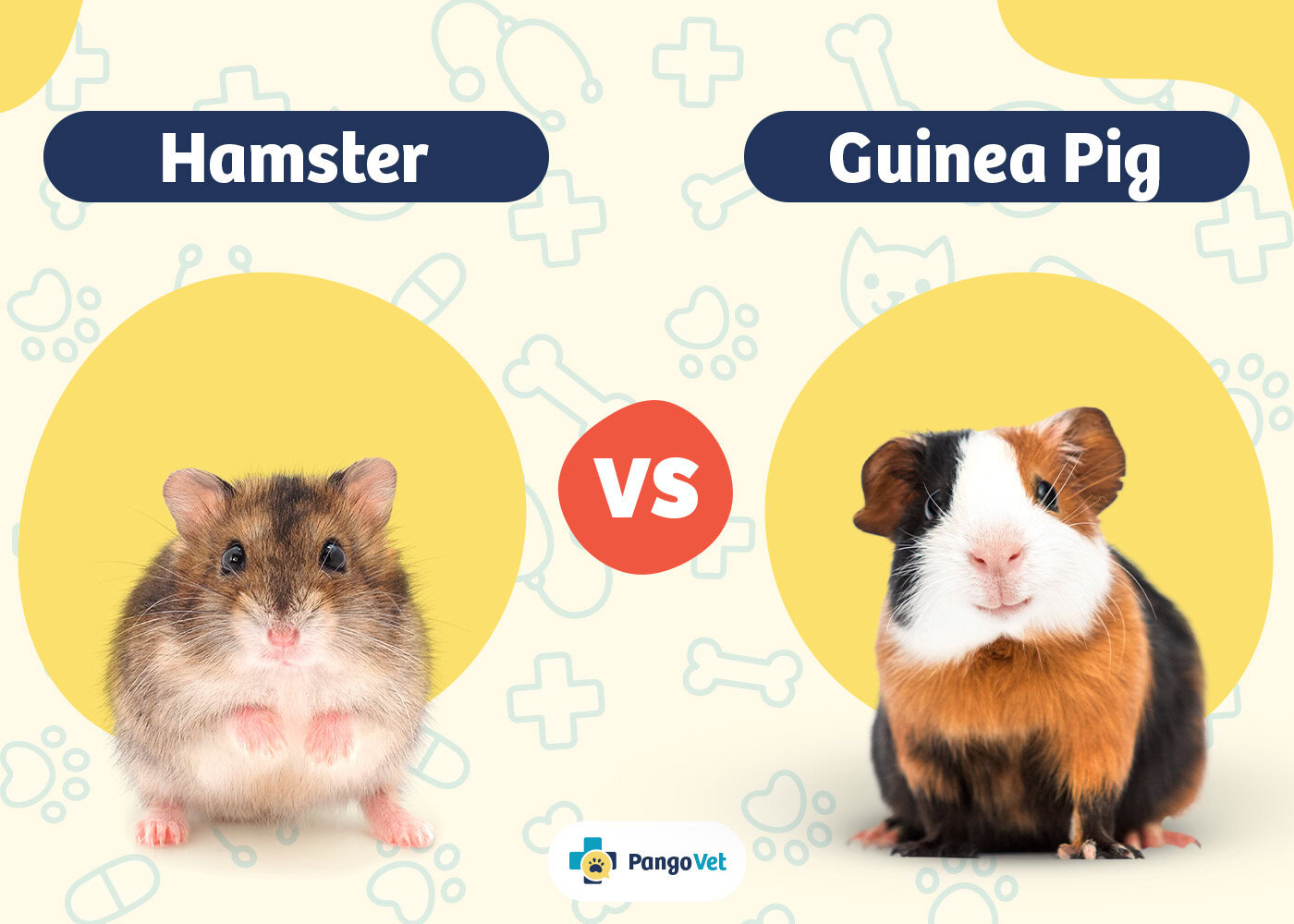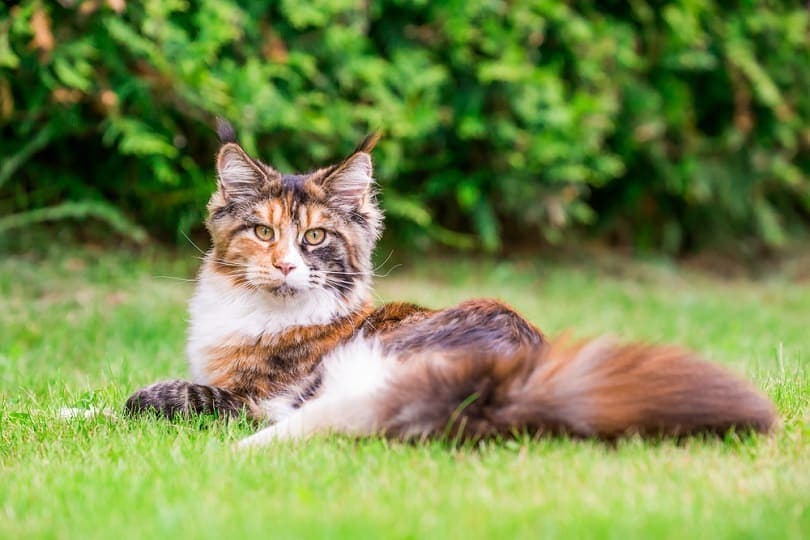VET APPROVED

The information is current and up-to-date in accordance with the latest veterinarian research.
Learn more »When it comes to cats, there are some well-known facts, but there are also some really common myths and misconceptions surrounding cats as well. Some of these cat myths are funny or absurd, but others can be harmful. We all love our cats and want the best for them, and the last thing any of us want is to accidentally do harm to our cats by choosing their care based on things we’ve heard that may or may not hold water. So, here are some of the most common myths and misconceptions about cats that we really need to stop believing.

The 18 Biggest Cat Myths & Misconceptions
1. Myth: Cow’s Milk is Good for Cats
Reality: Most adult cats lack lactase, the enzyme necessary to properly digest lactose, which is a sugar present in milk. Giving cow’s milk to your cat can lead to diarrhea, bloating, and flatulence, which is unpleasant for your cat and you, and often leads to a veterinarian visit. Kittens that must be hand-reared should be fed queen’s milk replacement formula, which contains the nutrients that kittens need to thrive.
Soy, almond, oat, and other non-animal kinds of milk are not good options for cats or kittens since they may lead to stomach upset and do not provide much in the way of nutrients. Goat’s milk is a tricky subject, and whether it’s good for cats or not seems to be up for debate. Some cats experience stomach upset with goat’s milk, and it is very high in fat, which isn’t ideal for adult cats. For kittens, it’s best to stick with commercial kitten milk replacers if mom isn’t around.
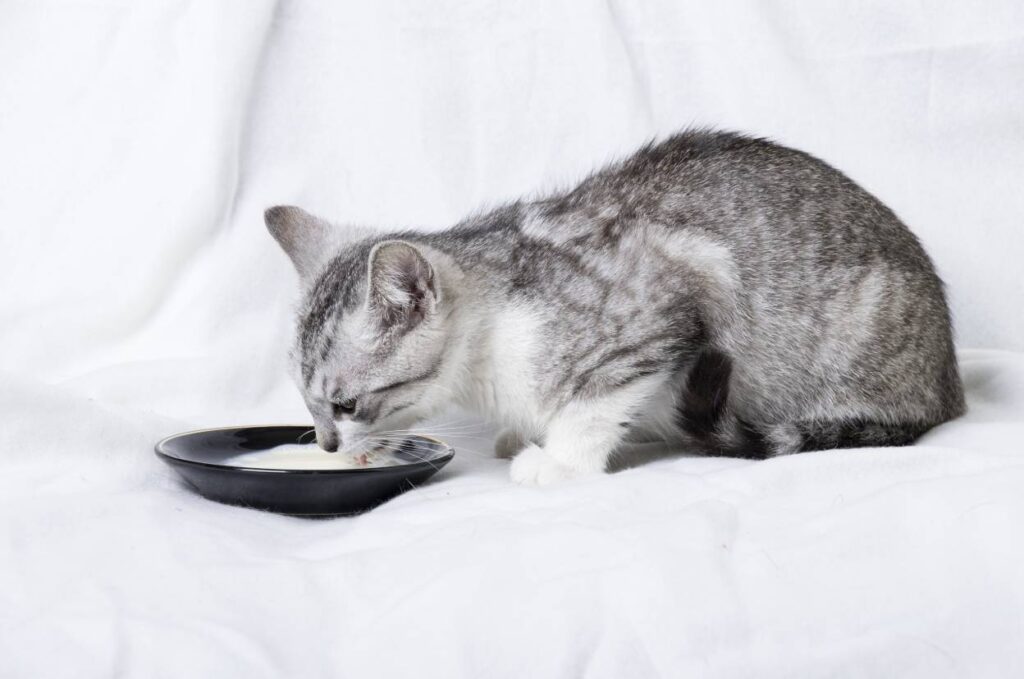
2. Myth: Cats Can Live on a Vegan or Vegetarian Diet
Reality: Cats are obligate carnivores. This means that their natural diet must contain animal protein sources for them to survive. Plant proteins and vegan or vegetarian diets do not meet all the nutritional needs of your cat. It’s a similar concept as vegans requiring B vitamin supplementation because some B vitamins are only available in animal protein sources. Except, for your cat, this supplementation isn’t something you can pick up at the local pet shop.
Even though you may find some commercially available vegan and vegetarian diets for cats, this doesn’t make them safe or ethical to feed to your cat. If you are ethically or morally opposed to feeding meat products to a pet, then you should stick with a herbivorous pet, like a rabbit.
3. Myth: Cats Always Land on Their Feet
Reality: While cats are exceptionally agile and acrobatic animals, they do not always land on their feet. Like any other animal, cats can be injured by falls, especially those from high heights. If you have a two-story home or a balcony, take precautions to prevent your cat from making risky moves that could result in a long fall. Don’t rely on your cat to make good judgment calls when it comes to preventing falls. From high enough, it doesn’t matter if your cat lands on their feet because they can still end up with injuries to their head, legs, or back.
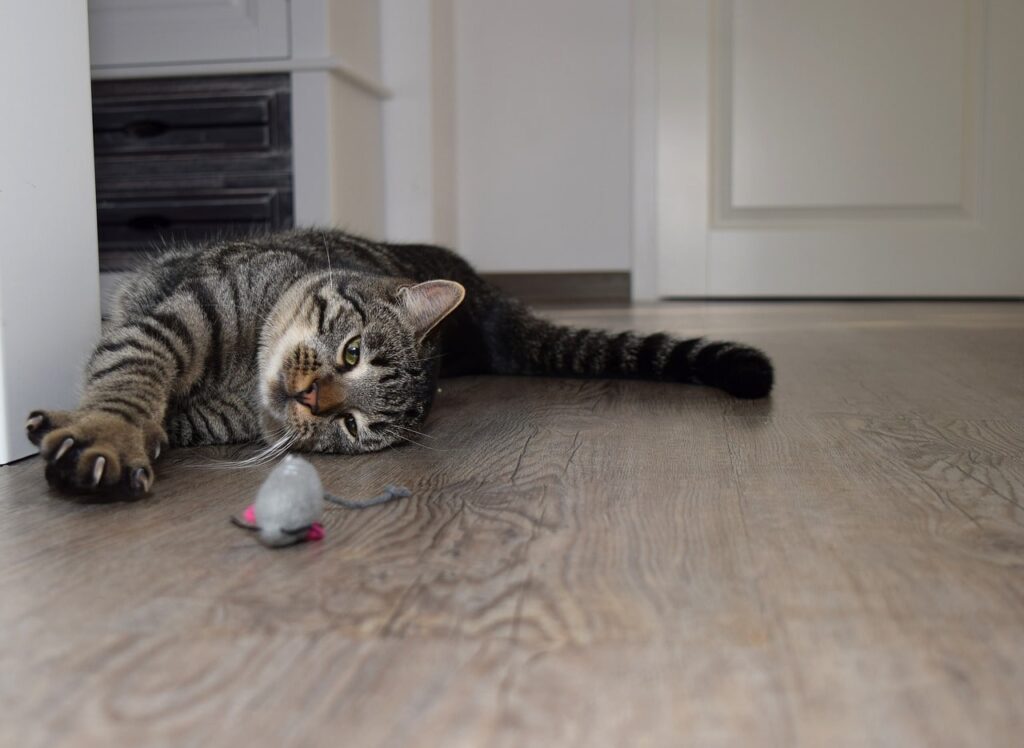
4. Myth: Cats Have Nine Lives
Reality: Obviously, this isn’t one to take at face value. We all know that cats only have one life, just like any other living animal. However, many people believe that cats can get out of risky situations by the skin of their teeth because of their agility, speed, and grace. This isn’t a reason to allow your cat to enter potentially dangerous situations, because they can end poorly for your cat. Illnesses, cars, other animals, falls, and other hazards pose daily dangers to cats that can result in injury or death.
5. Myth: Purring Means Your Cat is Happy
Reality: This one may come as a shock, but purring doesn’t always indicate your cat is happy. Purring can indicate happiness, but it can also indicate stress or pain. There are many reasons why cats purr, and it has been discovered that cat purrs happen at frequencies that support healing and stress relief. Sick or injured cats, or cats that are in pain for another reason, like labor, will purr. If your cat only purrs when they’re sitting in your lap and getting scratches on their head, then they’re likely purring because they’re happy. It’s important to keep an eye on your cat’s purring habits, though, and note any changes or unusual purring instances.
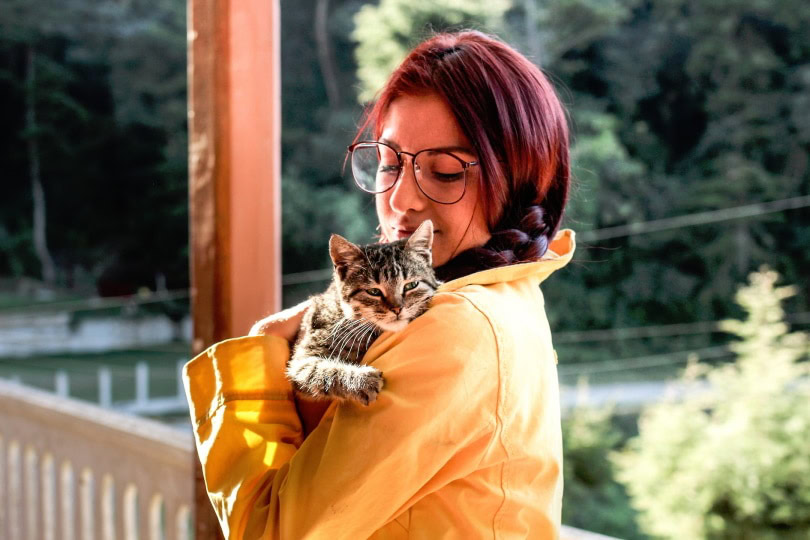
6. Myth: Cats are Low Maintenance Pets
Reality: Cats can be low-maintenance pets. Usually, if you stand on your head and hold your breath and do the splits on a Tuesday. Sorry, but cats just aren’t low maintenance. They got that label because they don’t require walks and don’t have the same play requirements as dogs. However, cats do require plenty of attention. Your cat needs daily playtime, grooming, and bonding. Your cat’s litter box should be attended to daily, food and water should be refreshed, and routine vet visits should be performed (more on that in a minute). All of that doesn’t include the additional care that young, sick, or elderly cats may require.
7. Myth: It’s Cruel to Keep Cats Indoors
Reality: Pet cats are apex predators, and they are capable of annihilating entire species. In fact, domestic cats have been tied to the extinction of 63 species across the world. Outdoor cats are a danger to the natural ecosystem and allowing cats outdoors unattended can put your cat in danger too. Cars, wildlife, and other domestic animals all pose threats to your cat, not to mention the risk of parasites and disease.
In some countries, it’s unusual to keep cats indoors, so there’s often pushback on this, but cats can be perfectly happy indoors, as long as you provide environmental enrichment for them. Cats are safer indoors, and they don’t endanger the native ecosystem. If your cat seems particularly interested in the outdoors, you can fit a secure cat harness for your cat and train them to use it, allowing them outdoor time on a leash, or you can build or purchase a “catio” for secure outside time.
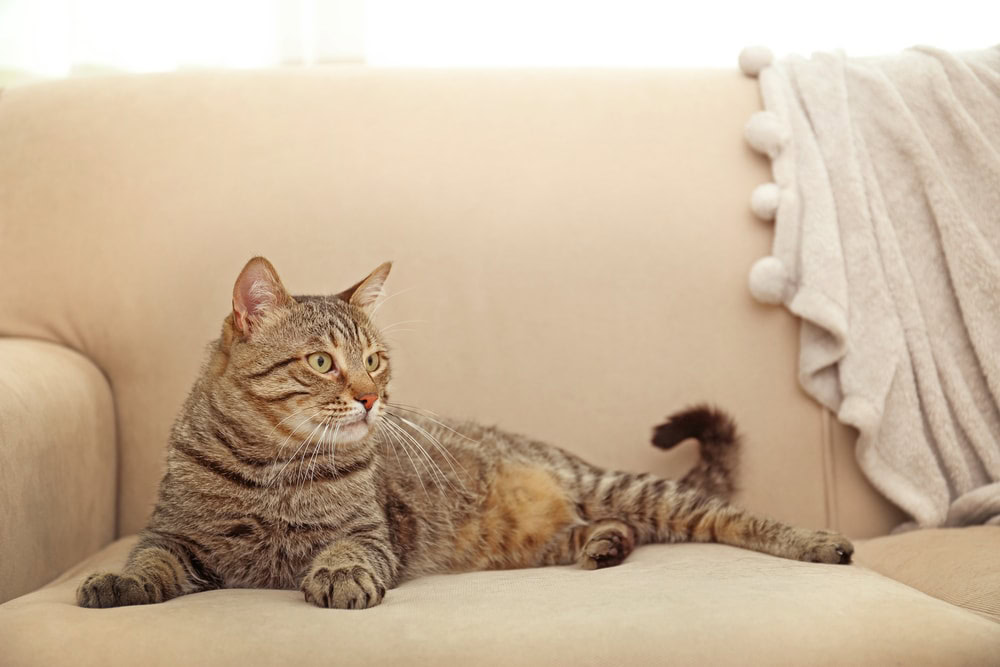
8. Myth: Cats Hate People
Reality: Just like people and other animals, cats have preferences. Some cats have not been properly socialized, some are shy, or simply prefer to stay away from people. Cats will usually have preferred people they’ll spend time with but hide away from other people. There are plenty of cats that are cuddly, playful, and adventurous, and love spending time with their humans. As a whole, cats definitely don’t hate people. They need to be approached in a respectful way and human interaction should feel predictable. Always give cats the option to choose if they want interaction, pay attention to their signs of being uncomfortable, and select carefully where you pet them.
9. Myth: Cats Hate Dogs
Reality: Some cats don’t get on well with some dogs, some cats don’t get on well with any dog, some cats love dogs, and some cats are fully indifferent to dogs. Proper introductions and socialization of both the cat and dog are necessary to succeed in keeping the two together. You will have to supervise and make sure boundaries are maintained, but cats and dogs are both good about letting the other know when boundaries have been crossed. It’s your job to keep your cat and dog safe together.
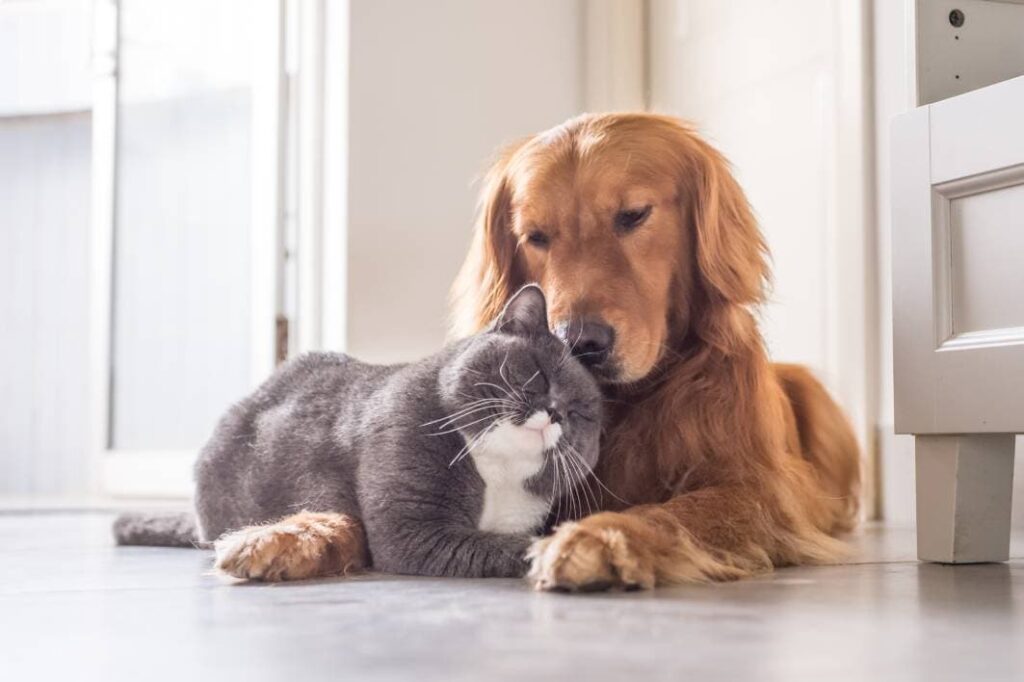
10. Myth: Cats Hate Other Cats
Reality: This one is similar to “cats hate dogs”. Some cats don’t want to live with other cats, some love the company of others, and some are indifferent. Early socialization and proper introductions are essential, and cats can be slow to warm up to new introductions in the home.
11. Myth: Cats Hate Water
Reality: Pet cat’s ancestors were desert wildcats, so it makes sense that cats aren’t huge fans of water, but some cats love water. Some people’s cats refuse to drink from a water bowl, insisting instead that they must drink from running water. Some cats will put their head under a stream of running water and lick the drips off to drink. Some cats, like Bengals, are known for their affinity for water.
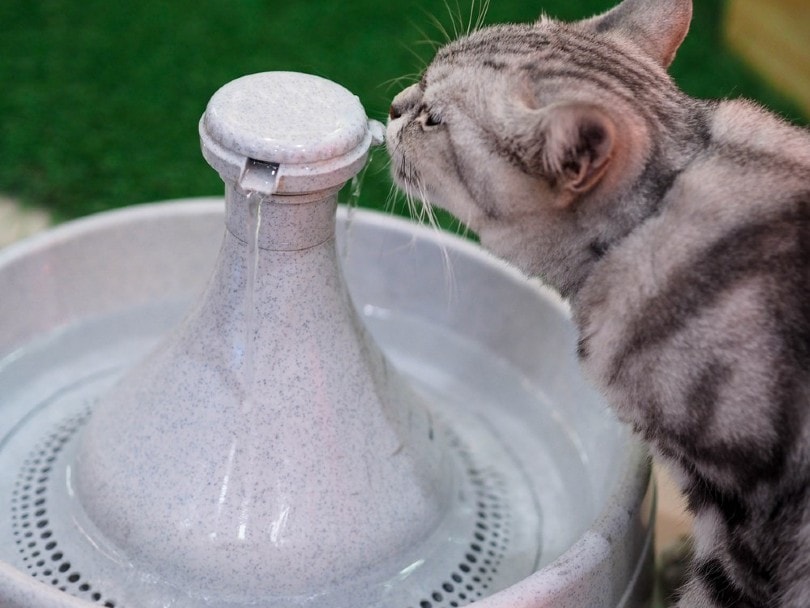
12. Myth: Declawing Cats is Harmless
Reality: Declawing cats involves fully removing not only the nail but also the last joint of the toes. This practice has been outlawed in multiple countries, and tensions often run high when discussing it. However, declawing cats has been linked to arthritis, back pain, and behavioral problems. Some declawed cats refuse to use the litter box because digging in the litter hurts their feet, while others may become prone to biting since their first means of protection has been removed. This procedure involves an unnecessary amputation of a cat’s body part and it prevents them from displaying normal instinctual behavior. Cats have claws for a reason, your vet can help you find respectful alternatives to declawing or ways to redirect your cat’s undesired scratching.
13. Myth: Indoor Cats Don’t Need Shots or Vet Visits
Reality: Indoor cats require the same vet checkups that outdoor cats do. Some veterinarians may alter the shot recommendations or schedule for indoor cats, but there is always the risk of your indoor cat getting out of the house, in which case you’ll want them to be fully vaccinated and protected against diseases. Rabies vaccinations are required by law in most parts of the U.S., and they must be administered by a veterinarian, so don’t skip out on this one.
Routine vet visits can also help catch problems early. Indoor cats may have a lower risk of catching diseases from other animals, but they are still susceptible to cancers, thyroid disease, kidney disease, and other illnesses. Routine vet visits can help catch these problems early, giving the best chance of good outcomes. Also, fleas may get into your house on other pets, or even on your clothes, and they can be difficult to get rid of. Fleas can lead to anemia and skin infections, and a veterinarian’s prescribed medication can help get rid of and prevent fleas.
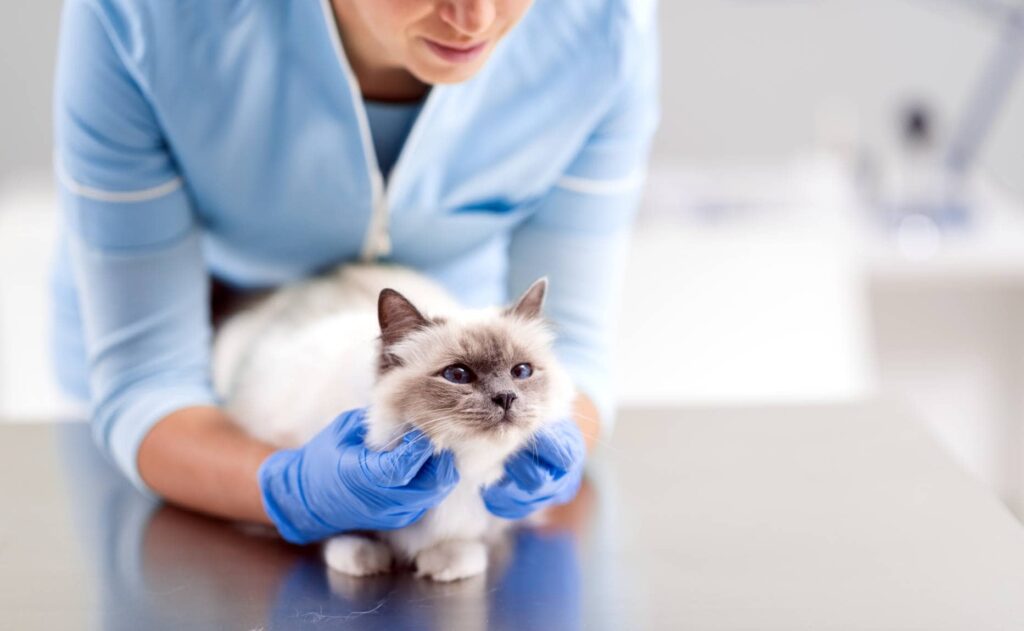
14. Myth: Cats Can See in the Dark
Reality: The reality is far less cool, unfortunately. Cats cannot truly see in pitch black, but they have several eye characteristics that allow them to see extremely well in very low light environments. This allows them to hunt during low light times, like dawn and dusk.
15. Myth: Cats are Nocturnal
Reality: Cats are crepuscular, which means they are typically most active at dawn and dusk. They sleep on average somewhere around 12–16 hours per day, though, so it’s hard to say they’re nocturnal just because sometimes they’re awake during the night or early morning. Bouncing off the walls at 2 am doesn’t equate to a nocturnal animal.
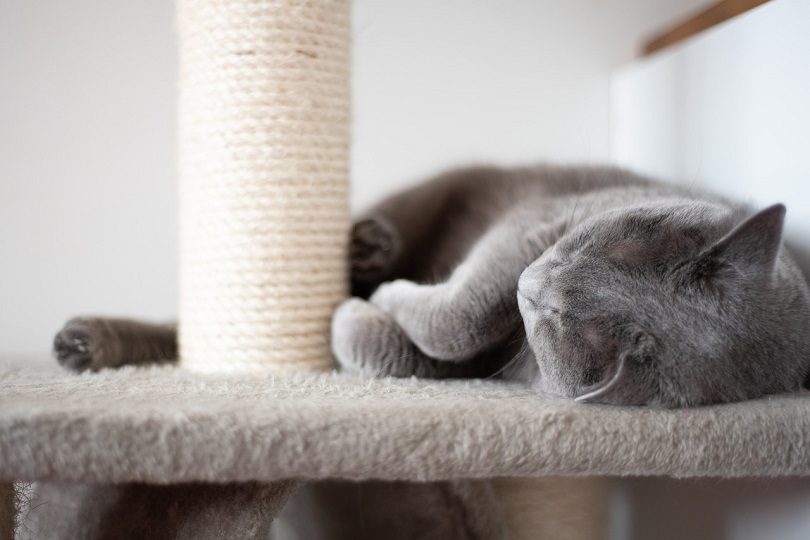
16. Myth: Get Rid of Your Cat if You’re Pregnant
Reality: Cats can get Toxoplasmosis, which is an infection caused by the protozoan Toxoplasma gondii, usually by eating prey or anything contaminated with feces from an infected cat. When infected, cats shed oocysts (the parasite’s harmful stage) for approximately one week. After this, cats develop immunity and they won’t shed them anymore. Toxoplasmosis is a zoonotic disease, and in pregnant women, it can lead to birth defects and miscarriage, so it can be very dangerous to get the infection while pregnant. However, the chances of your cat contracting Toxoplasmosis and shedding oocysts during your pregnancy are extremely low. And even with that, if you aren’t directly handling your cat’s stool, then the risk of contracting the disease from your cat is exceptionally low. Generally, the recommendation is to get somebody else to empty the litter box if you’re pregnant or wear gloves when handling it if you can’t avoid it. Reducing the frequency that you empty the litter box can actually increase the risk of Toxoplasmosis transmission, so daily emptying is necessary. It is much more common for pregnant women to contract Toxoplasmosis by eating contaminated badly washed vegetables or fruit, raw or undercooked meat. When it comes to managing cat ownership during pregnancy, your OBGYN is your best starting point.
17. Myth: Black Cats are Bad Luck
Reality: This myth is present in multiple countries, from the U.S. to Japan, and it has been around for centuries. The myth was especially strong during the panic surrounding witches and witchcraft in Europe and the United States, and it has simply held on since then. There is, of course, no actual link between black cats, or any cats, and bad luck. However, it has been reported that black cats may be adopted at lower rates than cats of other coat colors for reasons yet to be determined.
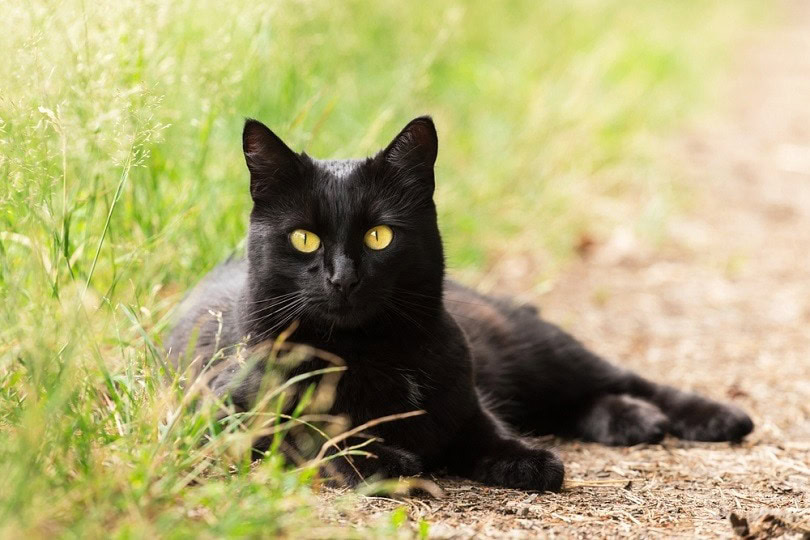
18. Myth: Cats Will Steal Your Baby’s Oxygen
Reality: Ok, we all know this one isn’t true. The belief that cats would steal oxygen from a baby is an old wives’ tale that went out of fashion long ago. However, it does tie into a belief that people do still hold today, and that is that your cat will smother your baby. Here’s the thing about cats, they love to cuddle up in warm, cozy spots. Few spots in the home are warmer and cozier than a baby bed, and some cats take quite an interest in babies, choosing to spend time with them.
It is possible for your cat to accidentally harm your baby, but cats aren’t going out of their way to intentionally smother babies. Like any other pet, your baby and cat should never be left unattended. Babies are loud and unpredictable, and cats are animals and may react to being grabbed or startled. Your cat should not be allowed in your baby’s bed simply because your cat needs to understand the boundaries of what does and doesn’t belong to them, and because it helps keep your baby and your cat safe.


Conclusion
There are a lot of inaccuracies out there when it comes to cats, which is surprising considering they are the second most common pet in the world. In fact, cats were domesticated somewhere around 10,000 years ago, so you’d think we’d have fewer misconceptions about them after that long! Clearing up misconceptions and cat myths can help to keep cats safe and healthy. It can also lead to improved knowledge of cat husbandry and help people come up with better alternatives for things like declawing and keeping cats outdoors.
Next on your reading list:
- Can Cats Drink Almond Milk? Is It Safe?
- Pet Myths and Misconceptions: It’s Time We Stop Believing These
Featured Image Credit: Julija Sulkovska, Shutterstock
Contents
- The 18 Biggest Cat Myths & Misconceptions
- 1. Myth: Cow’s Milk is Good for Cats
- 2. Myth: Cats Can Live on a Vegan or Vegetarian Diet
- 3. Myth: Cats Always Land on Their Feet
- 4. Myth: Cats Have Nine Lives
- 5. Myth: Purring Means Your Cat is Happy
- 6. Myth: Cats are Low Maintenance Pets
- 7. Myth: It’s Cruel to Keep Cats Indoors
- 8. Myth: Cats Hate People
- 9. Myth: Cats Hate Dogs
- 10. Myth: Cats Hate Other Cats
- 11. Myth: Cats Hate Water
- 12. Myth: Declawing Cats is Harmless
- 13. Myth: Indoor Cats Don’t Need Shots or Vet Visits
- 14. Myth: Cats Can See in the Dark
- 15. Myth: Cats are Nocturnal
- 16. Myth: Get Rid of Your Cat if You’re Pregnant
- 17. Myth: Black Cats are Bad Luck
- 18. Myth: Cats Will Steal Your Baby’s Oxygen
- Conclusion
